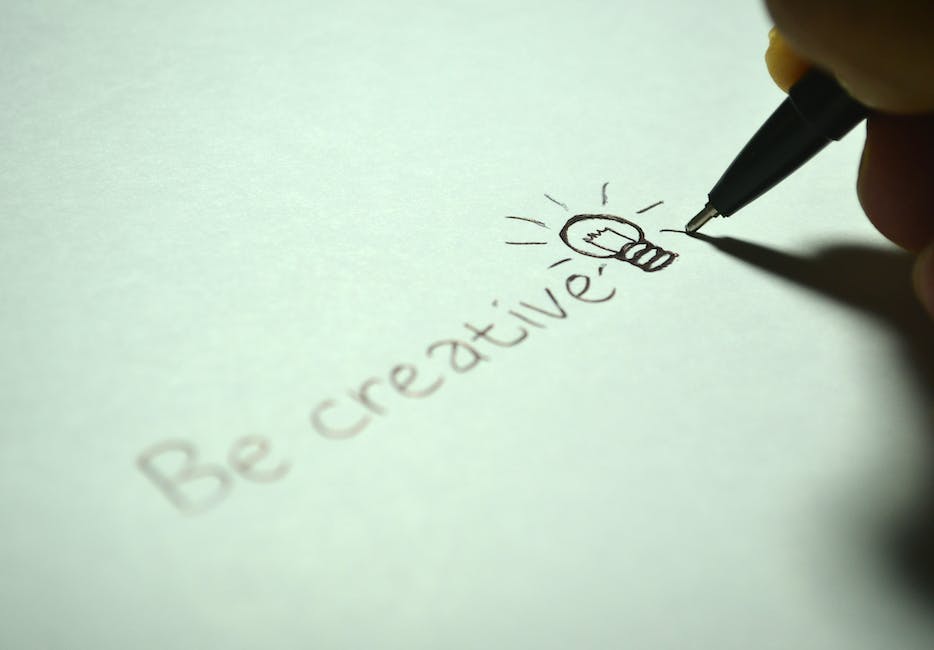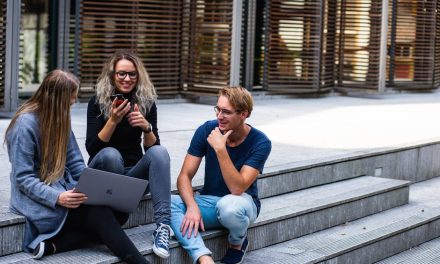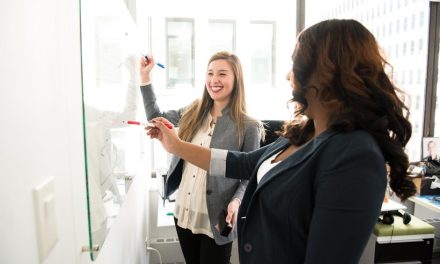Table of Contents
- Introduction
- The Importance of Integrating Arts in Arab Education Systems
- Exploring Innovative Approaches to Cultivate Creativity in Arab Students
- Promoting Cultural Identity and Expression through Arts Education in the Arab World
- Overcoming Challenges and Barriers to Foster Creativity in Arab Education
- Q&A
- Conclusion
Unleashing imagination, empowering minds: Transforming Arab education through the arts.
Introduction
“Nurturing Creativity: Rethinking the Arts in Arab Education” is a thought-provoking topic that explores the importance of incorporating arts education into the Arab education system. This introduction aims to provide an overview of the significance of nurturing creativity and rethinking the role of arts in Arab education.
The Importance of Integrating Arts in Arab Education Systems

Nurturing Creativity: Rethinking the Arts in Arab Education
The Importance of Integrating Arts in Arab Education Systems
In recent years, there has been a growing recognition of the importance of integrating arts in education systems around the world. This recognition stems from the understanding that the arts play a crucial role in nurturing creativity, critical thinking, and problem-solving skills in students. However, when it comes to Arab education systems, there is still a long way to go in fully embracing the potential of the arts.
One of the main reasons why integrating arts in Arab education systems is crucial is because it helps foster creativity. The arts provide students with a platform to express themselves, think outside the box, and explore new ideas. By engaging in artistic activities such as painting, music, or theater, students are encouraged to tap into their imagination and develop their own unique perspectives. This not only enhances their creative abilities but also equips them with the skills needed to navigate an increasingly complex and rapidly changing world.
Furthermore, integrating arts in Arab education systems is essential for promoting critical thinking skills. The arts encourage students to analyze, interpret, and evaluate different forms of artistic expression. Whether it is analyzing a painting, deconstructing a piece of music, or critiquing a play, students are challenged to think critically and develop their own opinions. This ability to think critically is not only valuable in the arts but also in other academic disciplines and real-life situations. It enables students to question assumptions, consider multiple perspectives, and make informed decisions.
Moreover, integrating arts in Arab education systems is crucial for developing problem-solving skills. The arts often require students to think creatively and find innovative solutions to artistic challenges. Whether it is composing a piece of music, choreographing a dance, or designing a set for a play, students are constantly faced with problems that require them to think outside the box. By engaging in artistic activities, students learn to approach problems from different angles, experiment with different solutions, and persist in the face of challenges. These problem-solving skills are not only valuable in the arts but also in various aspects of life, including academics, careers, and personal relationships.
Despite the numerous benefits of integrating arts in education, Arab education systems have traditionally placed a greater emphasis on academic subjects such as math and science. This has resulted in a neglect of the arts and a limited understanding of their potential in fostering creativity, critical thinking, and problem-solving skills. However, there is a growing recognition among educators and policymakers in the Arab world of the need to rethink the role of the arts in education.
To fully embrace the potential of the arts in Arab education systems, several steps need to be taken. First and foremost, there needs to be a shift in mindset among educators and policymakers. They need to recognize the value of the arts and understand that they are not just a form of entertainment but a powerful tool for nurturing creativity, critical thinking, and problem-solving skills.
Secondly, there needs to be a greater investment in arts education. This includes providing adequate resources, training teachers in arts pedagogy, and creating opportunities for students to engage in artistic activities. By investing in arts education, Arab education systems can ensure that students have access to a well-rounded education that prepares them for the challenges of the 21st century.
In conclusion, integrating arts in Arab education systems is of utmost importance. The arts have the power to nurture creativity, critical thinking, and problem-solving skills in students. By embracing the potential of the arts, Arab education systems can provide students with a well-rounded education that equips them with the skills needed to thrive in an increasingly complex and rapidly changing world. It is time to rethink the role of the arts in Arab education and give them the recognition they deserve.
Exploring Innovative Approaches to Cultivate Creativity in Arab Students
Nurturing Creativity: Rethinking the Arts in Arab Education
In today’s rapidly changing world, creativity has become a highly valued skill. It is no longer enough for students to simply memorize facts and regurgitate information. Instead, they need to be able to think critically, solve problems, and come up with innovative ideas. This is especially true in the Arab region, where there is a growing recognition of the importance of nurturing creativity in education.
Traditionally, the focus of education in Arab countries has been on rote learning and academic achievement. However, there is a growing realization that this approach is not sufficient to prepare students for the challenges of the 21st century. As a result, educators and policymakers are exploring innovative approaches to cultivate creativity in Arab students.
One such approach is the integration of arts education into the curriculum. The arts, including visual arts, music, dance, and theater, provide a unique platform for students to express themselves and explore their creativity. By engaging in artistic activities, students are able to develop their imagination, critical thinking skills, and problem-solving abilities.
Research has shown that arts education can have a positive impact on academic achievement. A study conducted by the Arts Education Partnership found that students who participate in the arts are more likely to excel academically, have higher test scores, and demonstrate better problem-solving skills. Additionally, arts education has been shown to improve students’ self-confidence, motivation, and ability to work collaboratively.
Incorporating arts education into the Arab curriculum requires a shift in mindset. It requires educators to move away from the traditional view of the arts as a separate and less important subject, and instead recognize its value as an integral part of a well-rounded education. This can be achieved by providing professional development opportunities for teachers, creating dedicated arts spaces in schools, and integrating arts activities into other subjects.
Another innovative approach to nurturing creativity in Arab students is the use of technology. Technology has the potential to revolutionize education by providing students with new tools and platforms for creative expression. For example, digital art programs allow students to experiment with different artistic techniques and mediums, while coding and programming enable them to create their own interactive projects.
Furthermore, technology can also facilitate collaboration and connection between students from different Arab countries. Online platforms and virtual classrooms provide opportunities for students to work together on creative projects, share ideas, and learn from each other’s perspectives. This not only enhances their creativity but also promotes cultural exchange and understanding.
To effectively implement these innovative approaches, it is crucial to provide support and resources for educators. This includes training teachers in arts education and technology integration, providing access to art supplies and technology tools, and fostering partnerships between schools and arts organizations.
In conclusion, nurturing creativity in Arab education requires a rethinking of the arts and the integration of innovative approaches. By incorporating arts education into the curriculum and leveraging technology, educators can provide students with the skills and mindset necessary to thrive in the 21st century. This shift in mindset and practice will not only benefit individual students but also contribute to the overall development and progress of the Arab region.
Promoting Cultural Identity and Expression through Arts Education in the Arab World
Nurturing Creativity: Rethinking the Arts in Arab Education
Promoting Cultural Identity and Expression through Arts Education in the Arab World
Arts education plays a crucial role in fostering creativity and self-expression among students. In the Arab world, there is a growing recognition of the importance of incorporating the arts into the education system to promote cultural identity and expression. By rethinking the role of the arts in Arab education, we can provide students with a well-rounded education that not only focuses on academic subjects but also nurtures their creative abilities.
One of the key benefits of arts education is its ability to promote cultural identity. The Arab world is rich in cultural heritage, and by incorporating the arts into the curriculum, we can ensure that students have a deep understanding and appreciation of their own cultural traditions. Through music, dance, and visual arts, students can explore and celebrate their cultural heritage, fostering a sense of pride and belonging.
Furthermore, arts education provides a platform for self-expression. In a region where freedom of expression can sometimes be limited, the arts offer a safe space for students to express their thoughts, emotions, and ideas. By encouraging students to engage in artistic activities, we can empower them to find their voice and develop their own unique perspectives. This not only enhances their creativity but also promotes critical thinking and problem-solving skills.
To effectively incorporate the arts into Arab education, it is essential to provide teachers with the necessary training and resources. Many teachers may not have a background in the arts, and therefore may feel ill-equipped to teach these subjects. By offering professional development opportunities and resources, we can empower teachers to confidently integrate the arts into their classrooms. This can be done through workshops, online courses, and collaboration with arts organizations.
In addition to teacher training, it is important to provide students with access to arts education. This can be achieved by ensuring that schools have well-equipped arts facilities and resources. By investing in arts infrastructure, we can create an environment that fosters creativity and allows students to fully engage in artistic activities. This includes providing instruments, art supplies, and performance spaces.
Furthermore, partnerships between schools and arts organizations can greatly enhance arts education in the Arab world. By collaborating with local artists, musicians, and dancers, schools can provide students with opportunities to learn from professionals in the field. This not only exposes students to different art forms but also allows them to see the potential career paths in the arts. By bridging the gap between the education system and the arts community, we can create a vibrant and thriving arts culture in the Arab world.
In conclusion, nurturing creativity through arts education is essential for promoting cultural identity and expression in the Arab world. By rethinking the role of the arts in education, we can provide students with a well-rounded education that fosters their creative abilities. This can be achieved through teacher training, providing access to arts education, and fostering partnerships between schools and arts organizations. By investing in arts education, we can empower students to express themselves, celebrate their cultural heritage, and contribute to the vibrant arts culture in the Arab world.
Overcoming Challenges and Barriers to Foster Creativity in Arab Education
Overcoming Challenges and Barriers to Foster Creativity in Arab Education
In recent years, there has been a growing recognition of the importance of creativity in education. Creativity is not only a valuable skill in itself, but it also enhances critical thinking, problem-solving, and innovation. However, fostering creativity in Arab education faces several challenges and barriers that need to be addressed.
One of the main challenges is the traditional emphasis on rote learning and memorization in Arab education systems. This approach leaves little room for creativity and originality. Students are often expected to simply regurgitate information without engaging in critical thinking or creative problem-solving. This rote learning culture stifles creativity and discourages students from thinking outside the box.
Another barrier to fostering creativity in Arab education is the lack of resources and support for arts education. Many schools in the Arab world prioritize subjects like math and science, neglecting the arts. This lack of emphasis on the arts limits students’ exposure to creative expression and hampers their ability to develop their artistic talents. Without proper resources and support, students are unable to explore their creativity fully.
Furthermore, societal and cultural attitudes towards the arts also pose a challenge to nurturing creativity in Arab education. In some Arab societies, the arts are seen as frivolous or unimportant compared to more “practical” subjects. This perception devalues the arts and discourages students from pursuing creative endeavors. It is crucial to change these attitudes and highlight the importance of the arts in fostering creativity and personal growth.
To overcome these challenges and barriers, a shift in educational policies and practices is necessary. Arab education systems need to move away from rote learning and embrace more student-centered and inquiry-based approaches. This shift would allow students to engage in critical thinking, problem-solving, and creative expression. Teachers should be trained to facilitate creativity in the classroom and provide students with opportunities to explore their creative potential.
Additionally, arts education should be integrated into the curriculum and given equal importance as other subjects. Schools should provide resources and support for arts education, including dedicated spaces for artistic activities and access to art supplies and equipment. By providing students with the necessary resources, schools can encourage them to explore their creativity and develop their artistic skills.
Moreover, it is essential to raise awareness about the value of the arts in Arab societies. This can be done through public campaigns, community events, and collaborations with local artists and cultural institutions. By showcasing the benefits of the arts, such as fostering creativity, self-expression, and cultural understanding, attitudes towards the arts can be changed, and their importance in education can be recognized.
In conclusion, nurturing creativity in Arab education requires overcoming various challenges and barriers. The traditional emphasis on rote learning, the lack of resources and support for arts education, and societal attitudes towards the arts all hinder the development of creativity in Arab students. However, by shifting educational policies and practices, integrating arts education into the curriculum, and raising awareness about the value of the arts, creativity can be fostered in Arab education. Embracing creativity in education is not only beneficial for individual students but also for the overall development and progress of Arab societies.
Q&A
1. What is “Nurturing Creativity: Rethinking the Arts in Arab Education” about?
“Nurturing Creativity: Rethinking the Arts in Arab Education” is a book or study that explores the role of arts in Arab education and proposes new approaches to fostering creativity.
2. Why is nurturing creativity important in Arab education?
Nurturing creativity in Arab education is important as it helps develop critical thinking, problem-solving skills, and innovation among students, preparing them for the challenges of the future.
3. What are some proposed approaches to nurturing creativity in Arab education?
Some proposed approaches to nurturing creativity in Arab education may include integrating arts into the curriculum, providing opportunities for artistic expression, promoting interdisciplinary learning, and encouraging collaboration and experimentation.
4. What are the potential benefits of rethinking the arts in Arab education?
Rethinking the arts in Arab education can lead to enhanced student engagement, improved academic performance, increased cultural appreciation, and the development of well-rounded individuals capable of contributing to society in various fields.
Conclusion
In conclusion, the concept of nurturing creativity and rethinking the arts in Arab education is crucial for the development and growth of individuals in the region. By incorporating arts education into the curriculum, Arab students can enhance their critical thinking, problem-solving, and communication skills. Moreover, fostering creativity can empower students to express themselves, think outside the box, and contribute to the cultural and economic development of their communities. Therefore, it is essential for Arab education systems to prioritize and invest in arts education to unlock the full potential of their students.





